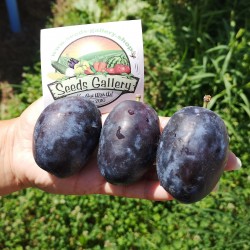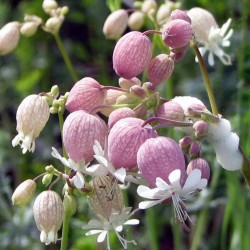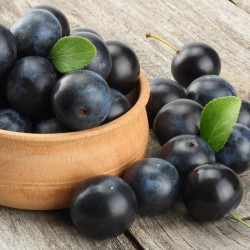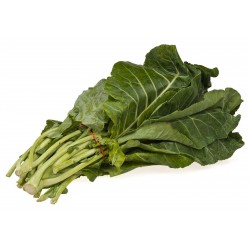Varieties from BiH

Variety from Bosnia and Herzegovina

Plant resistant to cold and frost

Wild Fig Seeds (from...
Regular price
€1.85
-15%
Price
€1.57
(SKU: V 19 WF)
- -15%
- New

Giant plant (with giant fruits)

Variety from Bosnia and Herzegovina

Plant resistant to cold and frost

Giant Bosnian Plum Seeds...
Regular price
€2.55
-15%
Price
€2.17
(SKU: V 197 BS)
- -15%
- New

Variety from Bosnia and Herzegovina

Bladder Campion Seeds...
Regular price
€1.95
-15%
Price
€1.66
(SKU: MHS 35)
- -15%
- New

Variety from Bosnia and Herzegovina

Plant resistant to cold and frost

Blackthorn or Sloe Seeds...
Regular price
€2.25
-15%
Price
€1.91
(SKU: V 156)
- -15%
- New

Variety from Bosnia and Herzegovina

Plant resistant to cold and frost

Sweet chestnut - Marron...
Regular price
€2.50
-15%
Price
€2.13
(SKU: V 13)
- -15%
- New

Variety from Bosnia and Herzegovina

Plant resistant to cold and frost

Bosnian garlic cloves Bosanac
Regular price
€1.55
-15%
Price
€1.32
(SKU: VE 229)
- -15%
- New

This Product cannot be paid with PayPal or Card

Variety from Bosnia and Herzegovina

Tobacco seeds Hercegovacki...
Regular price
€2.45
-15%
Price
€2.08
(SKU: D 1 HR)
- -15%
- New

Variety from Bosnia and Herzegovina

Babylon Bean Seeds
Regular price
€1.65
-15%
Price
€1.40
(SKU: VE 150 (3,5g))
- -15%
- New

Variety from Bosnia and Herzegovina

Plant resistant to cold and frost

Wheel Cactus or Camuesa...
Regular price
€1.65
-15%
Price
€1.40
(SKU: CT 7)
- -15%
- New

Variety from Bosnia and Herzegovina

Sea kale, Sea cole Seeds...
Regular price
€1.95
-15%
Price
€1.66
(SKU: VE 188)
- -15%
- New

Variety from Bosnia and Herzegovina

Plant resistant to cold and frost

Wild Grape Seeds (Vitis spp.)
Regular price
€1.55
-15%
Price
€1.32
(SKU: V 131 WG)
- -15%
- New

Giant plant (with giant fruits)

Variety from Bosnia and Herzegovina

Plant resistant to cold and frost

Giant White fig seeds from...
Regular price
€1.95
-15%
Price
€1.66
(SKU: V 19 GWF)
- -15%
- New









